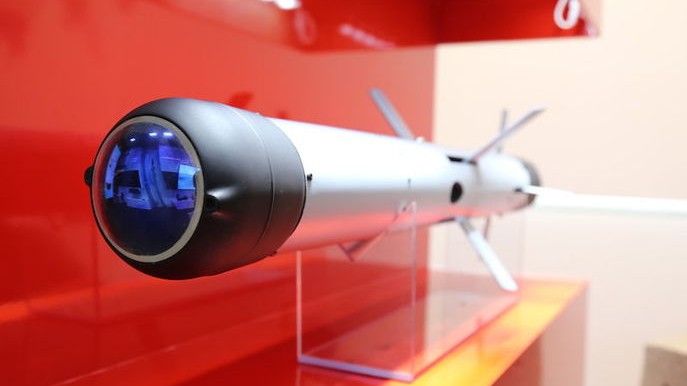Polish MoD Will Increase the Anti-Tank Capabilities. Upgraded Spike Missiles for the Army?

The Polish military is going to acquire two types of anti-tank grenade launchers and at least two types of ATGMs. The programmes in question have only reached the stage of analytical-conceptual phase. The MoD is also carrying out an analysis, the goal of which would be to define the stance related to potential acquisition of Spike LR 2 missiles that could utilize the existing launchers.
Polish MoD announced that procurement processes related to two types of anti tank grenade launchers and two types of anti tank guided missiles are still in the phase of conceptual analysis. This means that the date when agreements are signed or deliveries begin cannot be defined. The MoD also announced that analytical effort has begun, covering the potential acquisition of new generation Spike missiles.
According to the information received by us from the Polish Ministry of Defence Centre of Operations, the Armament Inspectorate is currently carrying out the analytical-conceptual phase related to procurement of the following equipment: multiple use anti-tank grenade launchers (multi-purpose launchers), single use anti-tank grenade launchers and “Karabela” anti-tank guided missiles.
Pustelnik light ATGM programme is also in its analytical-conceptual phase. The aforesaid initiative has been included in the Polish military’s Technical Modernization Plan, with the newly formed Territorial Defence branch of the Armed Forces in mind. The Ministry did admit that both “domestic and foreign” manufacturers are being considered as the potential contractors. In case of all four of the aforesaid procurement processes (Karabela, Pustelnik and multiple- and single-use grenade launchers), the Ministry claims that expected agreement conclusion and first delivery dates can be indicated.
The MoD also declares that an analysis is underway, the goal of which is to develop a stance, with regards to potential acquisition of new Spike ATGMs in the LR 2 variant. Here we are referring to a new version of the Spike-LR system, premiered by Rafael last year. These missiles use a new generation guidance system and offer an extended range (from 4 to 5.5 km, or even up to 10 kilometres in case of a radio-guided variant for the helicopters). Furthermore, Spike-LR 2 also features a new warhead.
At the same time, the LR 2 variant may be launched with the use of the standard system. The Polish Army remains in possession of 264 portable Spike-LR launchers. It is also expected that Rosomak APC and, probably, Borsuk IFV, would also utilize the said armament. These will be used in the unmanned ZSSW-30 turrets for Rosomak and Borsuk fighting vehicles. It is also planned that a similar solution would be integrated with the existing fleet of vehicles fitted with the Hitfist-30 turret modules.
The MoD suggests that the procurement procedure related to the anti-armour assets is still in its infancy. Most of the requirements have been included in the Technical Modernization Plan just recently which, at least to some extent, may be viewed as a result of forming the Territorial Defence service. The technical dialogues concerning the multi-purpose grenade launcher and the Karabela ATGM did not begin until the end of 2017.
When it comes to ATGMs, Pustelnik is to be a light and simple to use system for the light infantry units, including the Territorial Defence. Karabela, on the other hand, is a heavier missile, the performance sheet of which would be advantageous in comparison with Spike. Karabelas are expected to be vehicle- and, plausibly, helicopter-launched.
When it comes to the grenade launcher, procurement of the single-use systems had been planned quite some time ago, and now the process is delayed. Towards the end of 2015 the Armament Inspectorate was claiming that initiation of a procurement procedure within that scope was planned for 2016, which ultimately did not happen.
Initially the Ministry was assuming that the RPG-7 systems and the withdrawn RPG-76 launchers, would be replaced solely by light single use launchers. Multiple-use launchers acquisition has become a part of the “Technical Modernization Plan” just recently.
The activities related to procurement of anti-armour weaponry stem from a serious backlog emerging in the area. In fact, Spike missile remains the only modern anti-tank weapon available within the inventory of the Polish military in higher quantities, nonetheless the number of missiles is still not sufficient enough to meet all of the requirements. This is still the case, even though 1000 extra missiles were a subject of an agreement signed in late 2015.
Moreover, the Polish military also possesses the “Malyutka” ATGMs coupled with BWP-1 IFW and BRDM-2 reconnaissance platform. However, the missile in question shall rather be considered to be obsolete. RPG-7 is the primary grenade-launching weapon. This asset is complemented by minor quantities of Carl Gustafs and lighter AT-4 and RPG-75 systems. Throughout the Anakonda 2016 exercise, the Territorial Defence units involved also used the SPG-9 recoilless rifles.
The procurement procedures in question should make it possible to create a layered anti-tank defence system within the Polish Army. A variety of anti-tank assets may form a comprehensive and complementary body of inventory when it comes to its specification or usage of guidance units. Utilizing several guidance units within a single mission makes it more difficult for the enemy to utilize the countermeasures.
Enhanced anti-tank defence capabilities has also been listed as one of the priorities of the Strategic Defence Review, this also includes procurement and modernization of main battle tanks or scattered-mine-laying systems. Procurement of more anti-tank assets is a right decision, as the weaponry that had been planned to be acquired would have turned out to be insufficient, considering the level of threat. The intentions expressed by the MoD must become tangible, and this is often more difficult than just placing the acquisition in the modernization plans.
